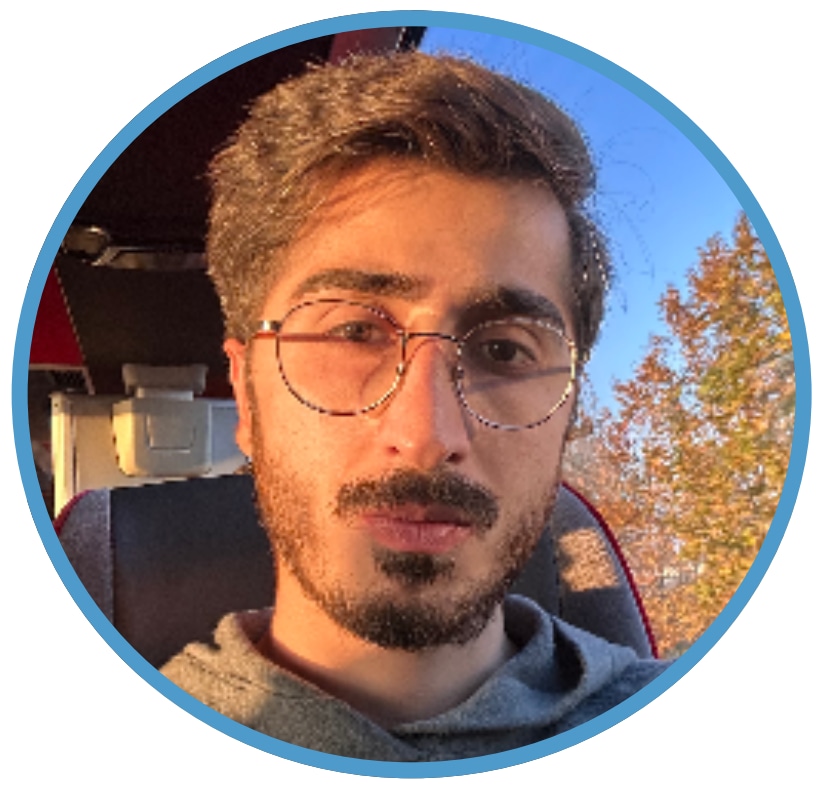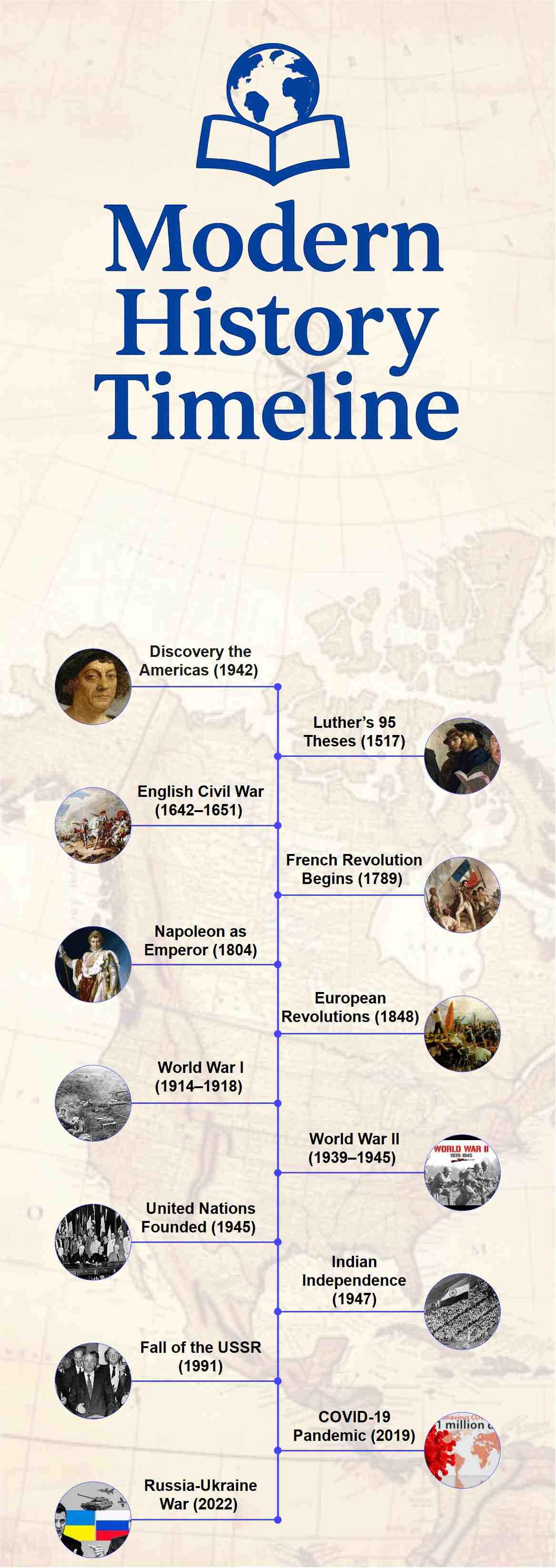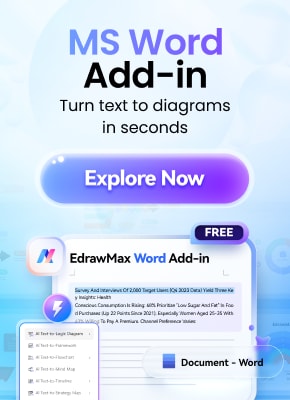Change often comes from those willing to question the status quo. Modern history was exactly that kind of moment. It was more than battles, treaties, or political speeches. Ideas sparked revolutions, discoveries, and new ways of living. Society, technology, and culture were all up for reinvention.
This timeline will guide you through the key moments of that transformative era. You’ll meet explorers, leaders, and ordinary people who dared to challenge old systems and imagine a different future. In the end, you will also learn how to make a Modern History timeline using EdrawMax.
In this article
Modern History Timeline
Modern history is a vast period, roughly from 1500 CE to 1945 CE. Some historians even extend it to the present day. It’s usually divided into the Early Modern Period (1500-1800) and the Late Modern Period (1800-1945).
This era brought huge changes. The printing press was invented, explorers discovered new lands, and ideas from the Enlightenment spread. Revolutions, the Industrial Revolution, and two world wars also shaped the modern world. The achievements of past civilizations continue to inspire future generations. Let’s look at some key events one-by-one.
Discovery of the Americas (1492)
In 1492, Christopher Columbus sailed west across the Atlantic. He hoped to find a new route to Asia but instead reached the Americas. His journey opened a new chapter in global history.
The discovery created trade routes and connected distant cultures. But it also brought conquest, disease, and exploitation. For Indigenous peoples, it marked the beginning of a devastating era of change.
Martin Luther’s 95 Theses & Protestant Reformation (1517)
In 1517, Martin Luther nailed his 95 Theses to a church door in Germany. He protested the Catholic Church’s sale of indulgences and its corruption. His defiance challenged powerful religious leaders.
This act sparked the Protestant Reformation. New Christian denominations formed, and the Pope’s authority weakened. The movement changed Europe’s religion, politics, and culture, encouraging people to question long-standing traditions.
English Civil War (1642-1651)
The English Civil War broke out between King Charles I and Parliament. The king claimed absolute authority, but many citizens resisted. Their conflict turned into bloody battles across England.
In the end, Charles I was executed. Oliver Cromwell took power, and England became a republic. The war reshaped politics by showing that monarchs could be held accountable to Parliament.
French Revolution Begins (1789)
In 1789, French citizens were suffering from hunger, high taxes, and inequality. Frustration grew until people stormed the Bastille, a prison that symbolized royal power. It marked the start of the French Revolution.
The movement promoted liberty, equality, and fraternity. Though violence followed, it shook Europe’s monarchies. It also inspired other nations to fight for freedom and social change.
Napoleon Becomes Emperor of France (1804)
Napoleon Bonaparte rose from general to ruler of France. In 1804, he crowned himself Emperor in Paris. The act showed his ambition and independence from the Pope.
Napoleon introduced the Napoleonic Code, which shaped modern laws. Through wars, he expanded France’s power across Europe. Though defeated in the end, his reforms and leadership left a lasting legacy.
European Revolutions (1848)
In 1848, uprisings spread across Europe. Citizens demanded democracy, workers sought better conditions, and nations wanted independence. Revolts erupted in France, Germany, Italy, and beyond.
Most revolts failed, but their message endured. People were no longer willing to accept old systems of power. The revolutions signaled Europe’s slow move toward democracy and social reform.
World War I (1914-1918)
World War I began in 1914 after the assassination of Archduke Franz Ferdinand. Alliances drew many nations into the conflict. Trench warfare, machine guns, and gas attacks made it deadly.
In 1918, millions were dead. The Treaty of Versailles ended the war but left bitterness behind. The devastation reshaped global politics and laid the groundwork for World War II.
World War II (1939-1945)
In 1939, Nazi Germany invaded Poland. Soon, most of the world was at war, divided between the Allies and Axis powers. It became the deadliest conflict in history.
The Holocaust revealed unimaginable horrors. Battles stretched across continents. The war ended in 1945 with Germany’s surrender and atomic bombs on Japan. It reshaped global power and led to the United Nations.
United Nations Founded (1945)
After World War II, nations wanted to avoid another global conflict. In 1945, they formed the United Nations as a place to discuss problems peacefully.
The UN also works on issues like human rights, education, and health. While imperfect, it has played a major role in encouraging cooperation and resolving disputes without war.
Indian Independence from Britain (1947)
India gained independence from Britain in 1947. Leaders like Mahatma Gandhi inspired millions with nonviolent resistance and peaceful protest. Their unity made self-rule possible.
Independence came with partition, dividing India and Pakistan. The split caused violence and displacement. Still, the event showed how nonviolence and determination could defeat colonial rule.
Collapse of the Soviet Union (1991)
By the 1990s, the Soviet Union faced deep economic struggles. People demanded more freedom, and republics pushed for independence. In 1991, the superpower dissolved.
Russia became the largest new state. The collapse ended the Cold War and left the United States as the only superpower. Global politics shifted dramatically.
COVID-19 Pandemic Begins (2019)
In late 2019, a new virus called COVID-19 appeared. It spread quickly across the globe, forcing lockdowns and straining hospitals. Daily life changed almost overnight.
Millions died, but science advanced rapidly. Vaccines were created faster than ever before. The pandemic showed how connected the world is, and how vulnerable it can be.
Russia-Ukraine War (2022)
In 2022, Russia invaded Ukraine, launching Europe’s largest war in decades. Cities were destroyed, and millions of people fled as refugees. The fighting drew global attention.
The war disrupted energy supplies and economies worldwide. It also sparked debates about security and freedom. Still ongoing, its outcome will shape Europe’s future and global power balances.
Israel-Palestine War and U.S. Strikes on Iran (2025)
In 2025, Israel launched a devastating campaign in Gaza after renewed clashes with Palestinian groups. Entire neighborhoods were destroyed, and thousands of civilians fled as refugees. Aid groups warned of famine and collapse, but the strikes continued. The destruction of Gaza shocked the world and drew in powerful nations.
On June 22, the U.S. entered the conflict and targeted Iran’s nuclear sites. Iran’s Supreme Leader, Ayatollah Khamenei, declared the nation would never bow to U.S. pressure. The escalation raised fears of a wider Middle East war with global consequences.
How to Make a Modern History Timeline using EdrawMax?
Modern history is full of transformative events, but it can be difficult to keep track of everything. A visual timeline makes it easy to understand the sequence and impact of these moments. With EdrawMax, an excellent timeline software, creating timelines and mind maps is fast and simple.
Here’s how you can create your own Modern History Timeline using EdrawMax:
Step1Start with a Blank Canvas
- Open EdrawMax on your desktop, and sign in, or create an account if you don’t have one.
- Click New on the left panel, then choose Blank Drawing to start a fresh canvas.
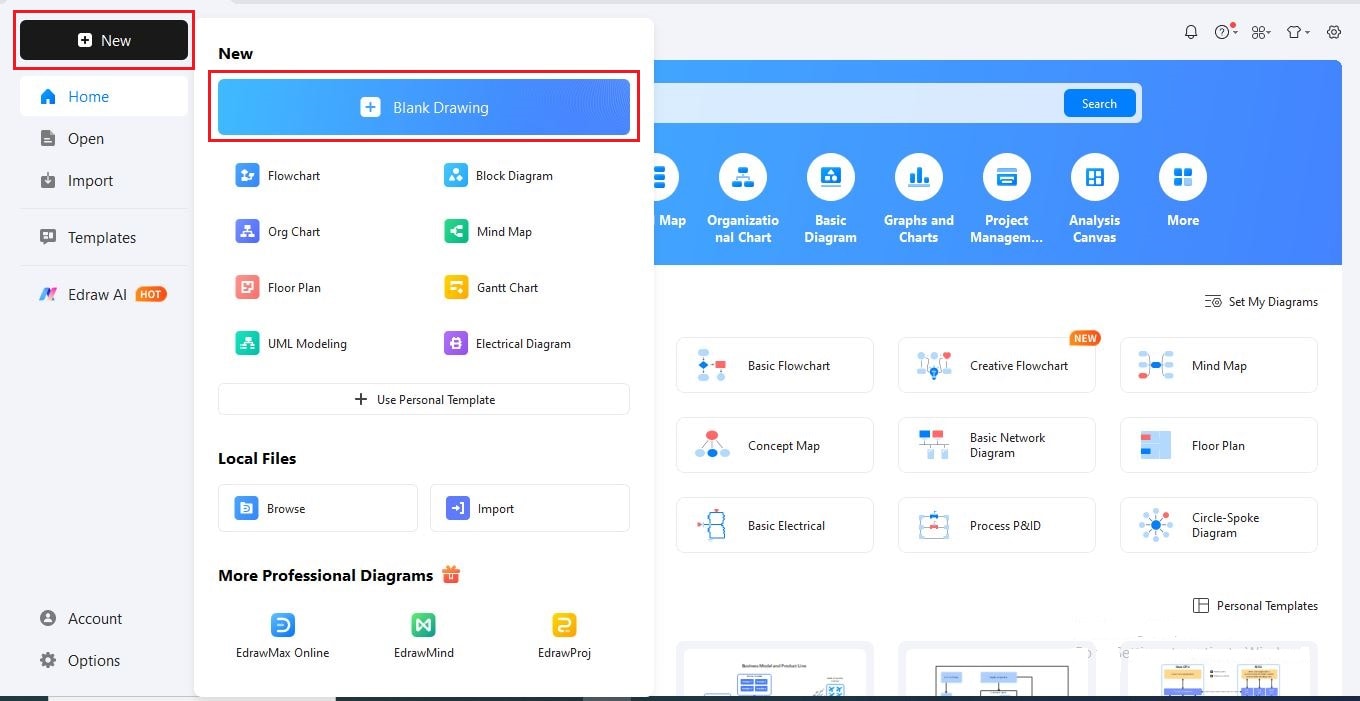
Step2Add a Background Image
- Go to the Insert tab and select Picture.
- Click Local Pictures to upload a background image for your timeline.
- Adjust brightness, contrast, or transparency using the Adjust options in the customization panel.
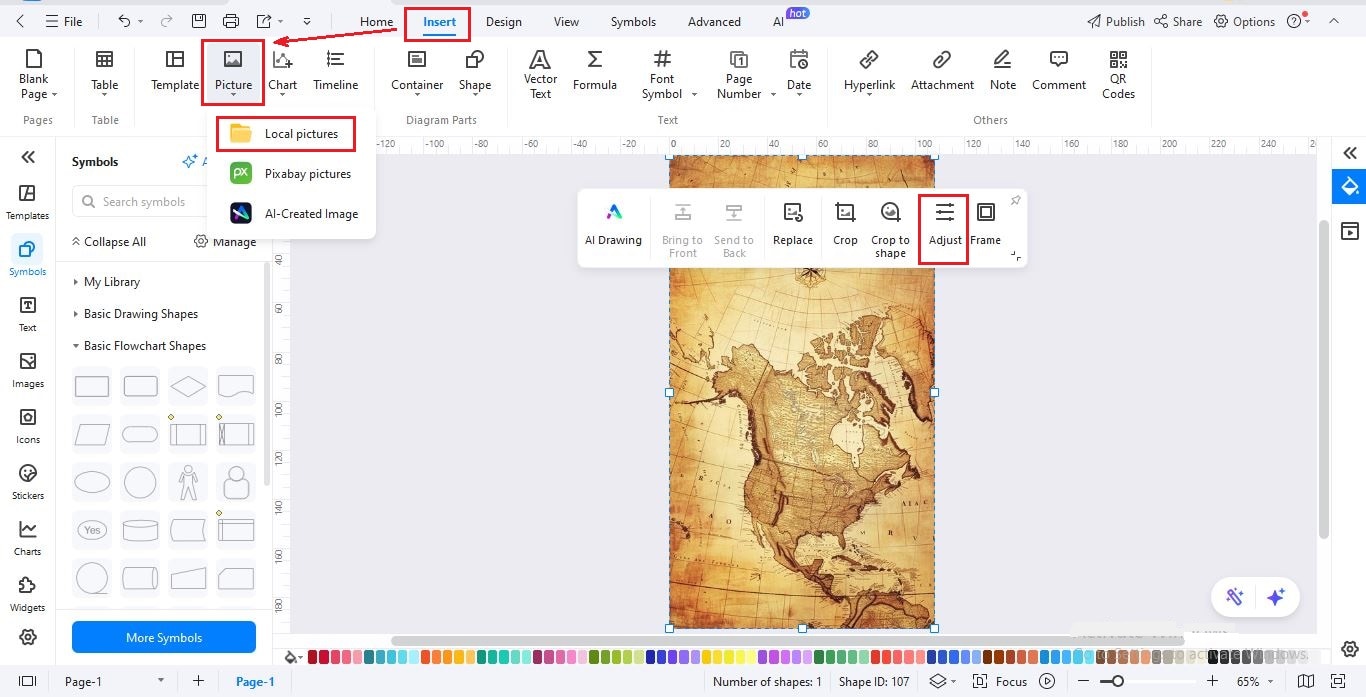
Step3Insert a Timeline Heading
- Add a title using a text box or image. Here, we’ll use an image.
- Click Insert > Picture > Local Pictures to place your heading.
- You can also add symbols or icons to enhance the design.
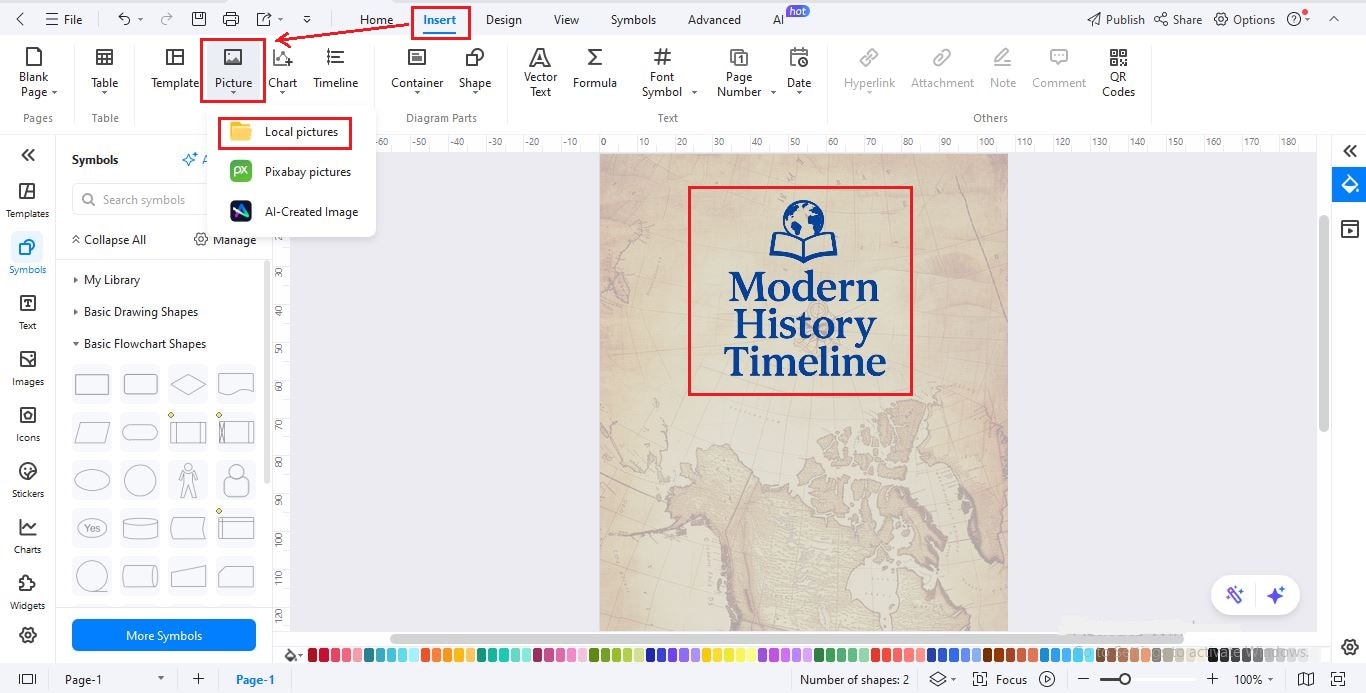
Step4Insert the Timeline Layout
- Click Insert on the top menu and select Timeline.
- Scroll and choose Vertical Timeline with images placeholders, then click OK to insert.
- Click the timeline, and a toolbar will appear to customize the timeline structure.
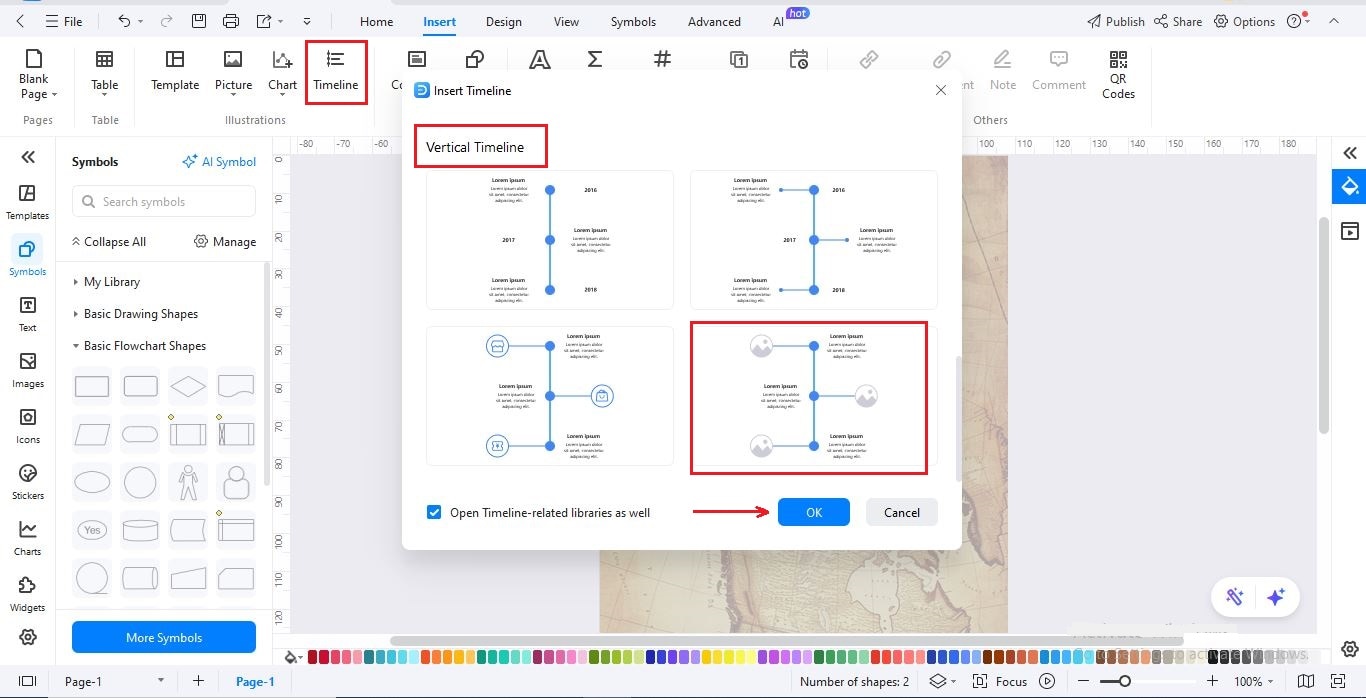
Step5Enter Text into the Timeline
- Click Text on the left editing panel.
- Use Click to Add Subtitle for the date and Click to Add Body for a short description.
- Repeat for all events in your timeline.
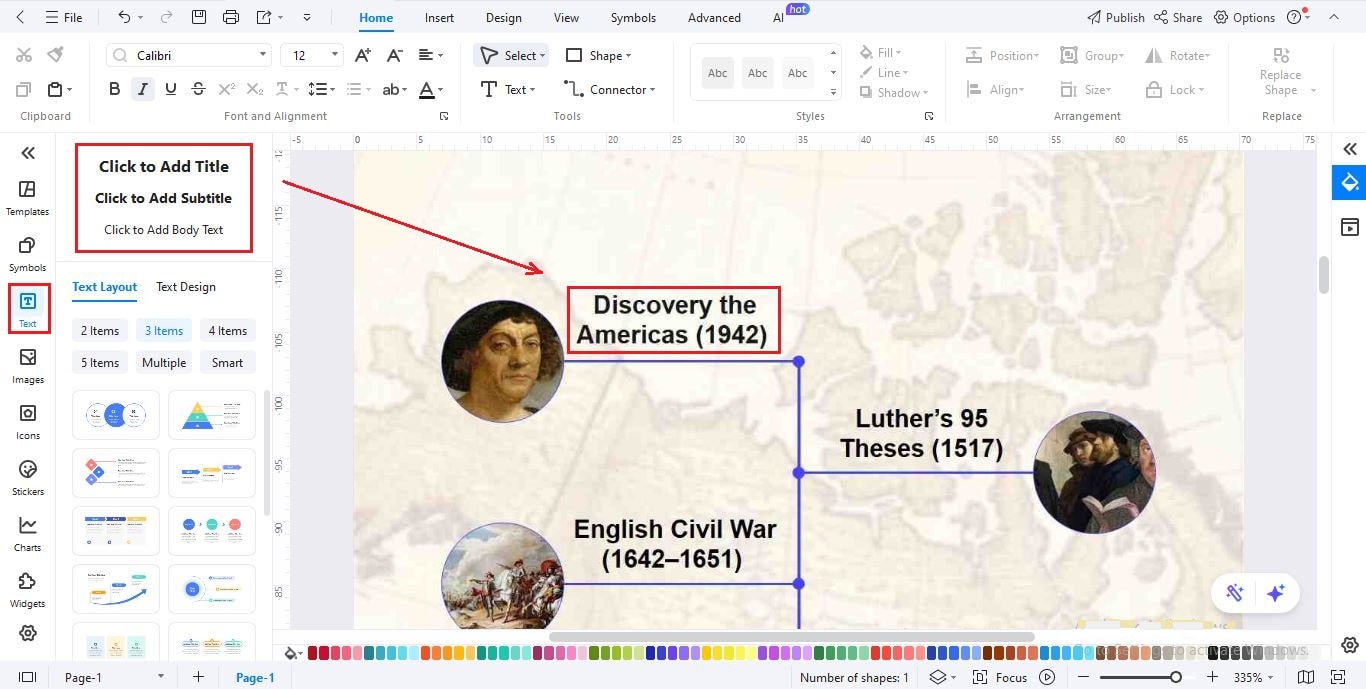
Step6Insert Thumbnail Images
- Add visual appeal by inserting images for each event.
- Go to Insert > Picture > Local Pictures, then place thumbnails.
- Click a thumbnail, choose Crop to Shape, and select a frame style.
- Repeat for all milestones.
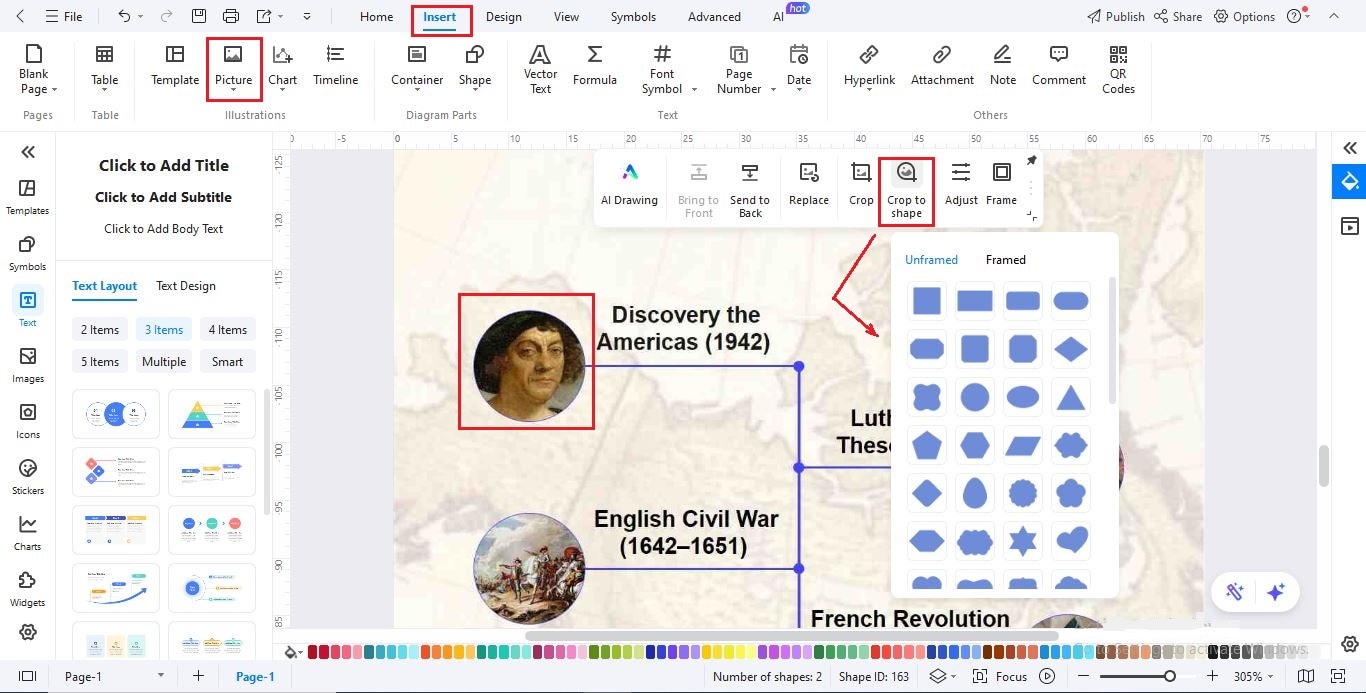
Step7Export Your Timeline
- When finished, click File > Save to keep it editable.
- Click Share to share your work with others, or export a static file via File > Export (PNG, PDF, SVG, HTML, Visio, or Excel).
- Click the Publish button to share your work with the EdrawMax community.
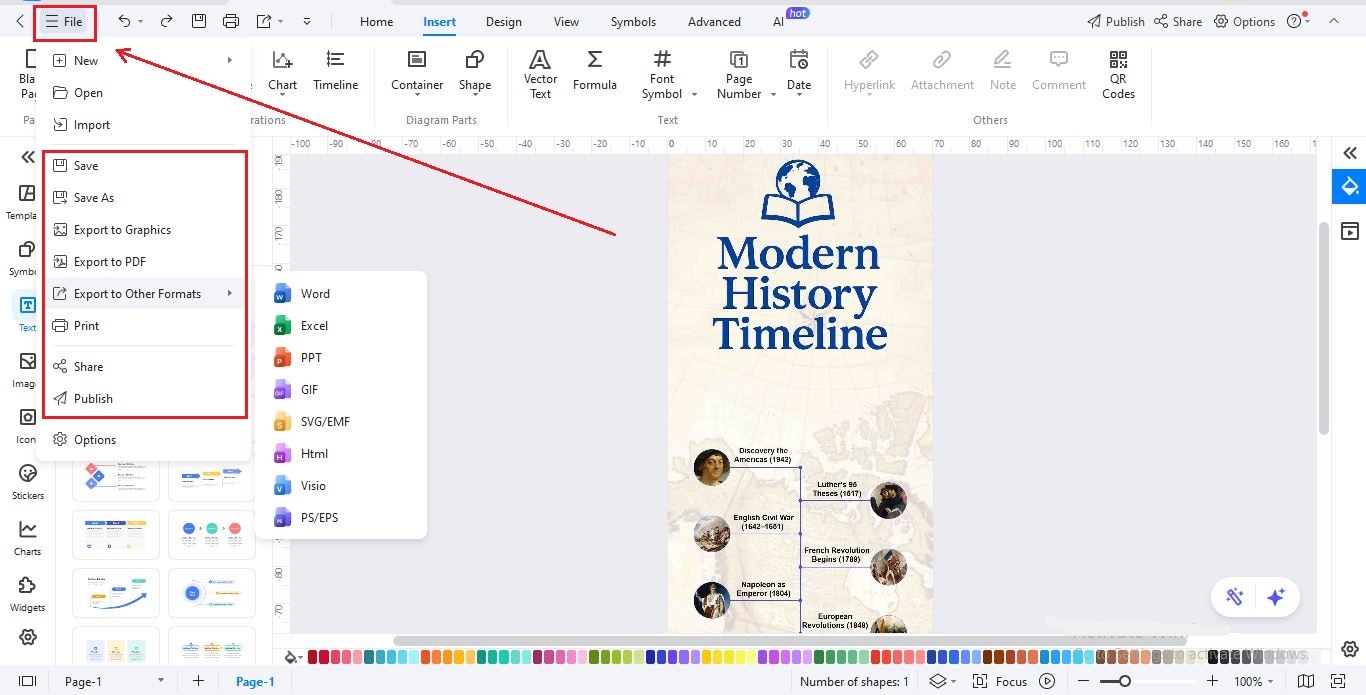
Final Words
History is a timeline of turning points, each shaping the world we live in today. From Columbus’s voyages to today’s conflicts in Gaza and Iran, every event has left lessons of ambition, struggle, and resilience. Understanding these moments helps us see patterns that may guide the future.
If you want to visualize history, create classroom projects, or design professional timelines, try EdrawMax. It’s a powerful tool to turn complex events into clear, engaging visuals.
